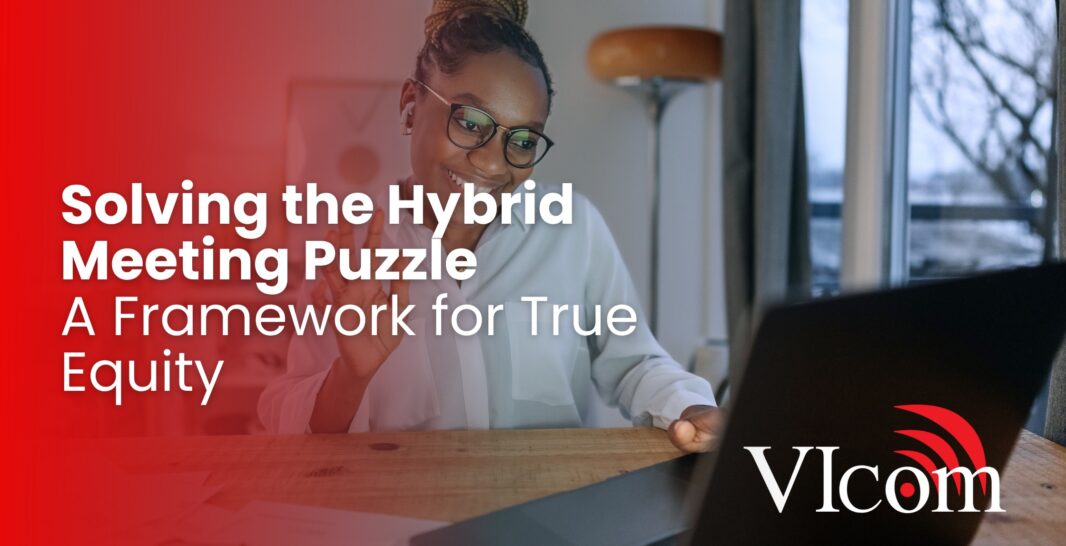The meeting is underway, but half the team isn’t truly there. Your remote participants are staring at the “bowling alley” view of a long conference table, unable to see who’s speaking. Their voices are distant and disembodied, while the in-room team struggles to share content from a physical whiteboard they can’t see. This isn’t collaboration; it’s a disjointed experience where remote attendees feel like second-class citizens. This failure of hybrid integration is more than an inconvenience—it’s a drag on productivity, a barrier to inclusivity, and a direct threat to team cohesion.
The Deeper Strategic Implications
When hybrid meetings fail, the consequences ripple across the organization. Projects slow down as miscommunication flourishes. Decision-making suffers because valuable perspectives from remote talent are lost. Over time, this “proximity bias”—where those physically present are favored—can erode morale and even lead to talent attrition as remote employees feel disconnected and undervalued. The core issue isn’t a lack of technology, but a failure to design an equitable experience. Solving this requires moving beyond a single camera and a speakerphone and architecting a holistic environment where technology and process converge to place every participant on a level playing field.
A Strategic Framework for True Hybrid Equity
Achieving equity requires a multi-layered approach that addresses the four primary points of failure in hybrid meetings. A successful strategy integrates technology and facilitation to create a seamless, unified experience.
- Visual Equity: Seeing is Believing
- The Problem: A single, static camera cannot capture the dynamics of an in-person group, leaving remote attendees disengaged.
- The Solution: Deploy intelligent camera systems. This includes using multiple cameras to provide views of the presenter, the in-room audience, and shared content. Modern AI-powered cameras from providers like Poly, Cisco, and Owl Labs can automatically track the active speaker and intelligently frame the group, giving remote participants a dynamic, production-quality view that keeps them immersed in the conversation.
- Auditory Clarity: Ensuring Every Voice is Heard
- The Problem: Poor audio, echoes, and background noise make it impossible for remote participants to follow the discussion, while in-room attendees can’t clearly hear remote contributions.
- The Solution: Implement advanced audio solutions tailored to the room. Ceiling microphone arrays capture clear audio from every seat, while technologies like acoustic fencing create a virtual barrier that eliminates distracting background noise. For the return path, strategically placed speakers with “voice-lift” capabilities ensure remote voices are projected clearly throughout the physical space.
- Content Collaboration: Bridging the Digital-Physical Divide
- The Problem: Ideas sketched on a physical whiteboard are invisible to remote colleagues, creating an instant information silo.
- The Solution: Replace analog tools with integrated digital ones. Digital whiteboards and interactive touchscreen displays allow all participants, regardless of location, to brainstorm and co-author content in a shared digital space. For physical objects or documents, dedicated high-resolution content cameras ensure everyone sees the same detailed view.
- Inclusive Facilitation: The Human Element
- The Problem: Even with perfect technology, in-person conversational habits can exclude remote participants.
- The Solution: Adopt new meeting protocols. Assign a “virtual facilitator” to monitor the chat and advocate for remote attendees. Deliberately call on remote participants first during Q&A and encourage everyone to use the “raise hand” feature. These small process changes are critical for breaking down proximity bias.
From Disjointed to Unified
Fixing hybrid meetings requires more than just new hardware; it demands a strategic commitment to equity. By thoughtfully designing an ecosystem that integrates intelligent video, crystal-clear audio, shared digital content, and inclusive facilitation practices, organizations can transform their most frustrating meetings into their most productive. This approach doesn’t just improve collaboration—it builds a stronger, more connected culture.
Schedule your free consultation with VIcom via the form below.

